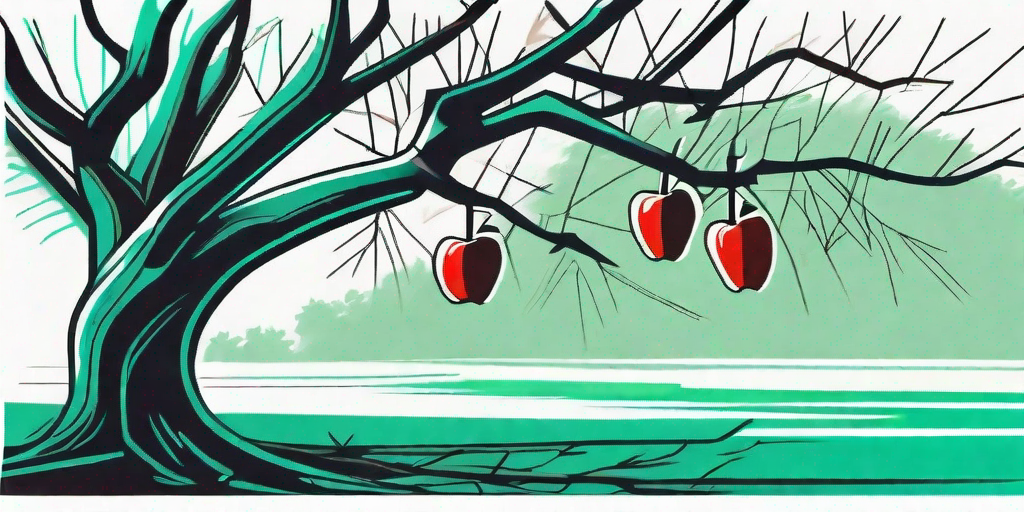
If you're an apple enthusiast, you know that there's nothing quite like biting into a crisp, juicy apple that you've grown yourself. But to get that perfect apple, you need to know a thing or two about pruning. Pruning is not just about making your tree look good - it's about improving its health and productivity. So, let's dive into the world of apple tree pruning and discover the best time to prune for a bountiful harvest.
Understanding the Importance of Pruning
Before we get into the nitty-gritty of when and how to prune, let's take a moment to appreciate why pruning is so important. Pruning is the act of selectively removing certain parts of a plant, such as branches, buds, or roots. This might seem a bit harsh, but it's actually a crucial part of maintaining a healthy tree.
Firstly, pruning helps to improve the tree's overall structure, making it stronger and more resilient. It also allows for better air circulation and sunlight penetration, which can help to prevent disease and promote better fruit production. Additionally, pruning can help to control the size of the tree, making it easier to harvest those delicious apples.
The Best Time to Prune
Now that we understand why pruning is so important, let's get down to business. When is the best time to prune your apple trees? Well, the answer might surprise you. While many people might assume that spring is the best time to prune, it's actually late winter or early spring, before the new growth starts.
Pruning during this dormant period minimizes stress on the tree and reduces the risk of disease. It also gives you a clear view of the tree's structure, making it easier to make strategic cuts. But remember, it's important to avoid pruning during very cold weather, as this can damage the tree.
How to Prune Your Apple Trees
Tools You'll Need
Before you start pruning, make sure you have the right tools. A good pair of pruning shears is essential, and for larger branches, you might need a pruning saw. You should also consider wearing gloves to protect your hands and safety glasses to protect your eyes from falling debris.
It's also important to keep your tools clean and sharp. Dirty or dull tools can damage the tree and spread disease. So, give your tools a good clean and sharpen before you start pruning.
Pruning Techniques
When it comes to pruning, there are a few key techniques to keep in mind. Firstly, always make your cuts at a 45-degree angle, about 1/4 inch above a bud that is facing the outside of the tree. This encourages new growth to grow outwards, which helps to improve air circulation and sunlight penetration.
Secondly, focus on removing any dead, diseased, or damaged branches. These can be a drain on the tree's resources and can also spread disease. Also, remove any branches that are crossing or rubbing against each other, as these can cause damage over time.
Lastly, don't be afraid to thin out the tree. Removing some of the inner branches can help to improve air circulation and sunlight penetration. But remember, don't remove too much at once. A good rule of thumb is to remove no more than 1/3 of the tree's total branches each year.
Common Pruning Mistakes to Avoid
Pruning can be a bit intimidating, especially if you're new to it. But don't worry, we've all been there. To help you avoid some common pruning mistakes, here are a few tips.
Firstly, avoid pruning too much at once. As mentioned earlier, you should aim to remove no more than 1/3 of the tree's total branches each year. Removing too much can stress the tree and reduce its fruit production.
Secondly, avoid making flush cuts. These are cuts that are made too close to the trunk or parent branch. Flush cuts can damage the tree and make it more susceptible to disease. Instead, make your cuts at a 45-degree angle, about 1/4 inch above a bud.
Lastly, avoid neglecting your tree. Regular pruning is essential for maintaining a healthy and productive tree. So, make sure to give your apple tree a good prune at least once a year.
FAQs
Can I prune my apple tree in the summer?
While it's best to prune in late winter or early spring, you can do some light pruning in the summer if necessary. This is known as summer pruning and it's mainly used to control the size of the tree and to remove any diseased or damaged branches.
What if I've never pruned my apple tree?
If you've never pruned your apple tree, don't worry, it's never too late to start. Just remember to start slowly and don't remove too much at once. It might take a few years of regular pruning to get your tree into optimal shape.
Do all apple trees need to be pruned?
Yes, all apple trees can benefit from regular pruning. Pruning helps to improve the tree's overall health and productivity, so it's well worth the effort.
Conclusion
Pruning your apple trees might seem like a daunting task, but with a bit of knowledge and practice, it can become a rewarding part of your gardening routine. So, grab your pruning shears and give it a go. Your apple trees - and your future apple pies - will thank you.
Remember, the best time to prune is late winter or early spring, before the new growth starts. And don't forget to make your cuts at a 45-degree angle, about 1/4 inch above a bud. Happy pruning!











